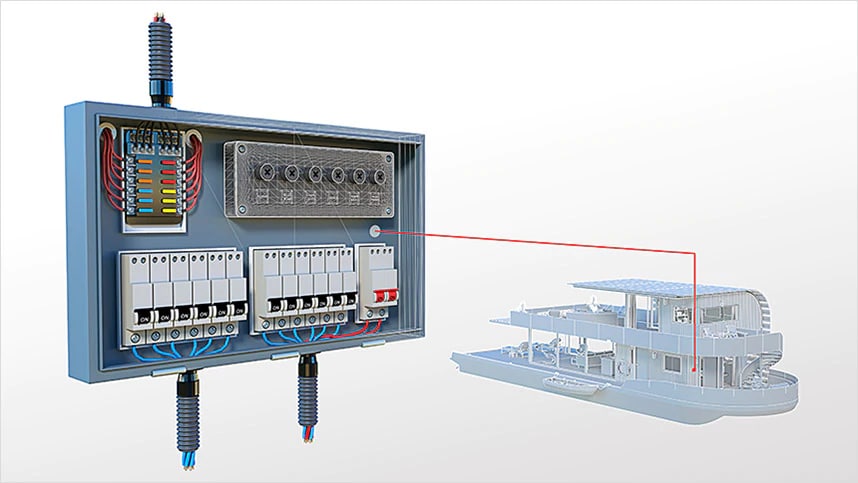Cutting-edge Electrical Design Services for Modern Infrastructure
As metropolitan environments expand significantly complicated, integrating technologies such as wise grids and renewable energy resources becomes extremely important. These innovations not just assure to optimize energy intake but additionally foster resilience against future demands.
Importance of Cutting-edge Electrical Design
Innovative electrical design plays a crucial duty in contemporary facilities, affecting not just efficiency but additionally sustainability. As cities develop and the need for power increases, the requirement for sophisticated electrical systems becomes vital. These systems must not only fulfill present demands but likewise prepare for future development and technological advancements.
A well-executed electrical design can substantially minimize power consumption, thus reducing functional expenses and reducing ecological effect. By integrating renewable energy resources, such as solar panels and wind turbines, innovative designs can improve power self-reliance and durability. Furthermore, smart grid technologies allow for real-time monitoring and management of energy circulation, maximizing performance and reducing waste.
Safety is one more essential facet of electric design. Implementing advanced modern technologies and strenuous requirements can reduce dangers related to electric failings, guaranteeing a safe atmosphere for companies and citizens alike. Additionally, ingenious layouts assist in adaptability, enabling frameworks to incorporate emerging modern technologies flawlessly.
Trick Trends in Electric Design
As the landscape of electrical design remains to advance, a number of key fads are shaping the future of the industry. One significant trend is the integration of smart innovation into electrical systems. The spreading of the Net of Things (IoT) has enabled real-time monitoring and control of electrical tools, enhancing efficiency and promoting predictive maintenance.
An additional fad is the expanding emphasis on modular design. This method enables for versatile and scalable options, enabling framework to adapt to transforming demands without considerable restorations. Furthermore, using advanced simulation devices and Building Info Modeling (BIM) is becoming increasingly common, improving the design process and enhancing collaboration among stakeholders.
Additionally, innovations in products science are bring about the advancement of lighter, extra durable, and energy-efficient elements. This innovation is particularly important for high-performance buildings and framework projects.
Lastly, there is a marked shift in the direction of data-driven decision-making - electrical load calculation. Leveraging data analytics aids developers enhance systems for performance and cost-effectiveness. Together, these trends symbolize a transformative era in electrical design, enhancing performance, sustainability, and durability in contemporary framework
Sustainable Power Solutions
Lasting energy remedies are significantly becoming a critical emphasis in electric design, mirroring a broader dedication to environmental responsibility and resource efficiency. These remedies intend to lessen environmental impact while optimizing energy consumption in different facilities, from property buildings to huge commercial facilities.
Among the foremost strategies entails the combination of sustainable power sources, such as photovoltaic panels and wind generators, right into electric systems. This not only minimizes reliance on nonrenewable fuel sources but also improves energy durability. In addition, innovative energy storage systems, such as advanced batteries, enable effective monitoring and distribution of power, making sure that surplus energy created during height production can be utilized throughout high demand durations.
In addition, energy-efficient design techniques are being taken on to boost overall system performance. This consists of using energy-efficient illumination, heating and cooling systems, and clever building innovations that adjust and monitor power usage based upon tenancy and environmental problems.
Smart Grid Technologies
The implementation of lasting power solutions naturally causes the expedition of wise grid innovations, which play a critical role in improving electrical systems. Smart grids take advantage of progressed communication modern technologies and information analytics to boost the dependability, effectiveness, and sustainability of electricity distribution. By integrating electronic technology with typical grid facilities, these systems facilitate real-time monitoring, automated control, and enhanced decision-making capacities.
Among the vital features of clever grids is their capability to suit renewable resource sources, such as solar and wind power. This adaptability not only reduces dependency on nonrenewable fuel sources but likewise enables an extra decentralized power manufacturing design. Clever grids allow need action programs, where customers can change their energy use based on real-time pricing, thus promoting power preservation and reducing peak lots demands.
Furthermore, smart grid innovations enhance grid durability by enabling quicker recognition and resolution of outages, eventually reducing downtime. With predictive upkeep and analytics, energies can enhance and optimize operations service delivery. As neighborhoods and cities remain to advance, clever grid technologies are necessary for constructing a sustainable and effective electrical facilities that satisfies the needs of modern-day culture.

Future-Proofing Framework
To guarantee long-term feasibility and flexibility, future-proofing framework is necessary in the swiftly advancing landscape of electrical design solutions. As innovation advancements and energy demands shift, it is important that electric systems are designed with adaptability in mind. This involves integrating scalable options that can fit future upgrades without demanding comprehensive overhauls.

Furthermore, sustainability has to be a keystone of future-proofed layouts. Using eco-friendly energy resources, such as solar and wind, and enhancing power effectiveness minimize reliance on fossil gas, lining up with worldwide efforts to deal with climate modification.
Conclusion
By prioritizing performance, sustainability, and adaptability, these services resolve the progressing demands of power systems. The assimilation of smart grid technologies and lasting power remedies enhances durability and minimizes functional prices.
A well-executed electrical design can dramatically decrease power usage, thereby reducing operational prices and reducing ecological effect. By integrating eco-friendly power sources, such as solar panels read the article and wind generators, innovative styles can boost energy freedom and durability. Additionally, cutting-edge energy storage systems, such as sophisticated batteries, allow reliable monitoring and circulation of energy, making sure that excess power created during height production can be used article source during high need periods.
Clever grids enable demand response programs, where customers can readjust their energy use based on real-time prices, therefore advertising power conservation and decreasing peak tons demands. (electrical design services)
As innovation advancements and energy needs shift, it is vital that electrical systems are developed with adaptability in mind.